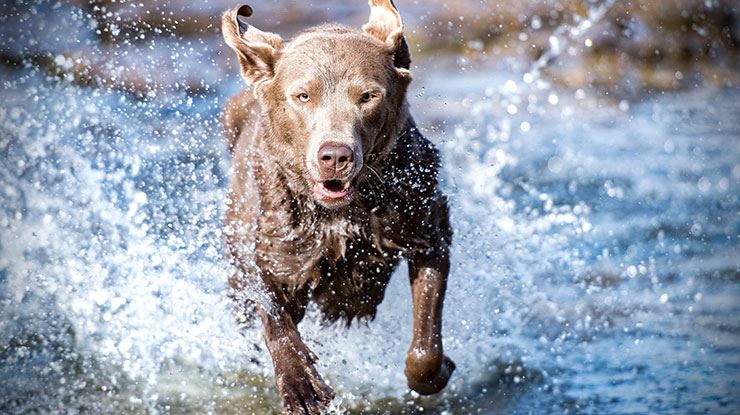
Three Tips to Help Your Senior Dog Make the Most of Its Health
Age inevitably slows us down sooner or later, and it is no different for our dogs. Ailments that have slowly built up over the years, such as painful joints or excess weight, can turn your once bouncy and energetic pooch into a much more sedentary creature.
Even if your dog is very old, it is still vitally important to give him regular exercise. Lack of exercise can exacerbate problems like obesity, arthritis, and even cardiovascular problems. Regular activity is important to keep your dog in good health so that he can get the most out of his senior years.
Walking
When you think of exercising a dog, walking is probably the first activity that comes to mind. This exercise should be an activity staple for your dog regardless of his age because walks can be scaled up or down depending on his fitness and ability levels.
It is important when walking your senior dog to choose a safe and appropriate surface to walk him on. Rocks and grassy areas with hidden ditches are unsuitable for senior dogs who have mobility issues, as their agility may be poor and there is a good chance that they may injure themselves on these surfaces. Instead, walk your dog on flat surfaces such as pavement and short grass (so you can be certain that there are no hidden dangers).
Swimming
Swimming is pretty much the perfect exercise for senior canines when the weather is warm. The water supports their weight and allows their joints to rest while giving them plenty of cardiovascular and muscular stimulation to improve their health.
Unfortunately, not all of us have a pool in our back garden to take advantage of; however, you may be able to take your dog to a nearby lake or pond. Moving water can be difficult for senior dogs to swim in, as they may not have the strength to fight against a strong current or tidal drift, so it is best to avoid taking your dog swimming in rivers or the sea.
Your dog may require some assistance in getting in and out of a pool, and be careful to keep your swim sessions short as it can be very tiring, especially if your dog’s legs can’t touch the bottom!
Fetching
Fetch is as much a staple of canine exercise as walking is, so it’s a good idea to keep this activity going in your dog’s life as he ages. But, as dogs age, their energy levels and physical capabilities may diminish over time. So, how can you keep your dog moving when the going gets tougher? Simply scale the exercise down according to your dog’s needs and abilities.
Instead of launching your ball as far as possible, throw it a shorter distance (30 feet or fewer). Also, allow your dog to rest between throws so that he doesn’t get too exhausted.
You could also use a ball-throwing machine, since these are perfect for senior dogs as they can be set to throw the ball as little as 10 feet and can also be used indoors so you don’t have to expose your dog to any harsh weather (extreme heat and cold is not good for most dogs, but especially senior dogs).
It is also important to ensure that you play fetch with something that isn’t too heavy (like a giant stick) as this can put additional strain on your dog’s joints. A lightweight tennis ball is ideal.
When exercising your senior dog, be careful to watch out for any excessive panting, limping, coughing, or general slowing down as any of these may indicate that your dog is struggling and may need vet attention.
Just because your dog is old, it doesn’t mean he needs to spend his life curled up in his dog bed. He will still love all the things he used to do for exercise, just be careful to scale the intensity down appropriately . . . but the fun doesn’t need to be scaled down at all!










